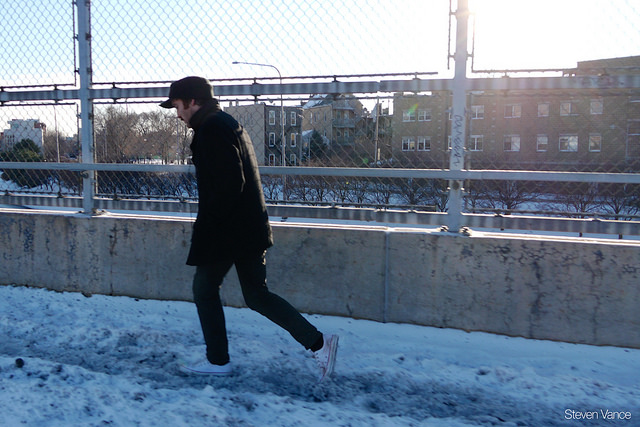There may have been a high of 74 degrees Fahrenheit yesterday in Chicago, but city departments and agencies want to remind residents that colder days are ahead, and let them know what preparations are being made for the coming deep-freeze.
“As we have seen with recent weather emergencies here in Chicago, dealing with extreme weather is not just preparing for an emergency situation, but also having a plan of action in responding and recovering from that situation,” said Office of Emergency Management and Communications’ Rich Guidice.
Ever since Michael Bilandic lost reelection after a failed response to the blizzard of 1979, Chicago mayors have been obsessed with keeping streets clear after snowfalls. According to the city, Streets and Sanitation maintains a fleet of over 300 snow-plowing trucks, including 20 new trucks this year. In addition, the department has approximately 374,000 tons of salt stationed at salt piles throughout the city.
To clear the way for plowing, Chicago's annual winter overnight parking ban takes effect from December 1 to April 1, from 3:00 a.m. to 7:00 a.m., regardless of whether there’s snow. The ban affects about 107 miles of streets. Violators face a minimum $150 towing fee, a $60 ticket and a storage fee of $20 per day.
The CTA says their employees have received extensive training in dealing with winter weather emergencies. Customers can stay abreast of storm-related route changes or major delays through informational displays at rail stations and some bus stops, as well as Twitter, Facebook and the agency’s website. Riders are encouraged to sign up on the website for winter service alerts.

While Chicago prioritizes plowing streets for drivers, there’s little enforcement of the ordinance requiring property owners and merchants to clear snow sidewalks. However, in recent years the city has at least done a better job of promoting this law. The ordinance requires those responsible to clear a path at least five feet wide on all of the sidewalks adjacent to their property, including any crosswalk ramps.
In addition, property owners aren’t allowed to shovel snow into the right-of-way, which includes bus stops, parking spaces, bike lanes, bike racks, Divvy stations and any other place where snow would impedes wheelchair, foot, bike, or vehicular traffic.
The city will also be re-launching www.ChicagoShovels.org where residents can access a Plow Tracker to see the location of plows in real-time during a storm. Chicagoans are also encouraged to sign up to volunteer with the Snow Corp program (not to be confused with SnoCore, the annual festival of alternative and metal bands that tours mountain resort towns) which pairs the volunteers with seniors or people with disabilities who need help with shoveling.
As for winter protected bike lane maintenance, starting in the next couple of weeks, workers will remove the flexible posts along protected bike lanes on streets with 2-inch snow parking bans or with no on-street parking to keep the bollards from being taken out by plows, according to CDOT spokesman Mike Claffey says. The department will have the same bike lane plowing plan in place this year as last, with a goal of clearing the snow within 24 hours after it stops falling. "We remind people to report snow in bike lanes to 311 and to report property owners pushing snow into the bike lanes to 311," Claffey said.
![]()
Did you appreciate this post? Consider making a donation through our PublicGood site.





